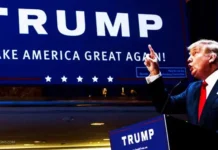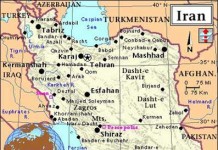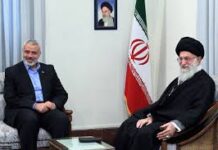Context
 The presidents of China and US met informally over the June 7th weekend at a resort in southern California. The agenda for the talks included North Korea, de-escalating tensions with Japan over the Senkaku Islands, climate change, and managing the evolving Cyber security related risks between the two nations. However, these are hardly the only high priority issues.
The presidents of China and US met informally over the June 7th weekend at a resort in southern California. The agenda for the talks included North Korea, de-escalating tensions with Japan over the Senkaku Islands, climate change, and managing the evolving Cyber security related risks between the two nations. However, these are hardly the only high priority issues.
The meeting of the two heads of states has occurred at a peculiar time when the US-Russia ties are tensing up further, especially over the affairs of Syria. Then, there is the stalemate of Afghan reconciliation and the connected US and NATO withdrawal.
At this juncture, the importance of China to US has increased even more. US would not want to alienate two heavyweights of the UN Security Council at the same time, and thus create a vibe that resonates of a civilizational divide. Moreover, recent events suggest confrontation may be creeping in on the fringes of the otherwise cooperative US-China ties. Trade and Cyber wars are the more obvious new fronts.
While China-US ties are moving towards cooperation in the Middle East and Africa, in the Asia Pacific and Americas matters appear to be tilting more towards rivalry, while affairs hang in the balance when it comes to South and Central Asia. And, the Summit was to take a stock of where the two powers are heading.
Analysis
Pivot to Latin America
The path of the Xi’s trip to the US passed through Latin America. His visit included Cost Rica and Mexico. Just before Xi’s trip, Obama and Biden made their own trips to almost the same states. Most of the US and Chinese activities in the Latin America have to do with trade and economics, but the experts agree that something may be fundamentally changing in the Americas.
This alteration may have to do with and connected to the American pivot to the Asia Pacific. Although American scholars are very reluctantly pointing to this, nonetheless, the suspicion is there. The Chinese may be sneaking into the American home sphere of influence using the garb of trade. Obviously, this is not the first time this has happened in history. Does this mean US would have to take a fresh look at the Monroe Doctrine and Roosevelt Corollary, is yet to be seen.
China, Russia And Middle East
When it comes to the Middle East, it’s not clear if the US has convinced China to get more involved, or if the country is doing this on its own. China recently presented its own four-point proposal for resolving the infamous Israeli-Palestinian conflict, though immediately shrugged off by Russia. As part of the Chinese Middle East peace initiative, Palestinian President Mahmoud Abbas and Israeli Prime Minister Benjamin Netanyahu both visited China in May. It should be noted that on the Syrian conflict, China and Russia have pretty much upheld the same position, non-intervention and respect for state sovereignty.
However, media reports reflect a push by the US to get China more involved in the core issues of the Arab world. For this purpose, the two states may include the Middle East peace in the upcoming US-China Strategic and Economic Dialogue. The talks are likely to divulge into the role of Russia in Syria. When it comes to the Middle East, Chinese encroachment appears to be welcomed and influenced by the US, but resented by Russia.
China And Mali
On the other hand, China recently revealed its recent decision to send 500 troops to Mali. These soldiers will be under the UN security mission and in support of France. Some of these troops are meant for combat mission, which is a first for China. The country has largely stayed away from such operations in the past, as it does not want to be seen as intervening in other countries for efforts linked to the wider war on terror. However, China is clearly going beyond that hesitation now. The country wants to be perceived as a responsible global player and a stabilizing force in Africa.
China And Afghanistan
US also does not appear concerned regarding Chinese role in the AfPak region. China and India have invested heavily in Afghanistan and thus require a stable security situation there, in which Pakistan can help greatly. Using its sway over its strategic partner, China can possibly make things a lot easier for NATO withdrawal.
Pakistan usually delicately balances its ties between both US and China. However, the nation may have settled its bets in favor of China. The country recently handed over the administration of its strategic Gawadar Port to a Chinese firm. Moreover, Pakistan has made a decision to adopt the Chinese Beidou navigation system for its critical systems, expected to be fully functional globally by 2020.
Conclusion
As in the Americas, Chinese and American officials are following each other in and out of South Asia. John Kerry will be visiting Pakistan and India towards the end of June. His visit will be following that of the Chinese Premier, who visited Pakistan even before the new government was installed.
China, Russia and US, share the threat from Islamic extremists. The difference is over how far to go towards eradicating the menace, and if the solution is a political or a military one. At the same time, China and Russia are concerned that states aligned with them are dissipating while fighting the war.
The approach China adopts in South Asia is derived from the totality of its ties with the US. This is not much different from how the US positions itself against China. While Russia may be happy to see China sneaking in to America’s backyard, it does not appear pleased about its role in the Middle East. At the same time, China and Russia share worries over American presence in the Pacific. While the US has tried to appease Russia by backing off slightly from the European missile defense system, their views are diverging over the situation of Middle East.
The unfolding events of Syria have further demonstrated the fight there may be more related to the global tussles and the reestablishment of spheres of influence. And, in this sense we are seeing history repeating itself.



